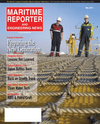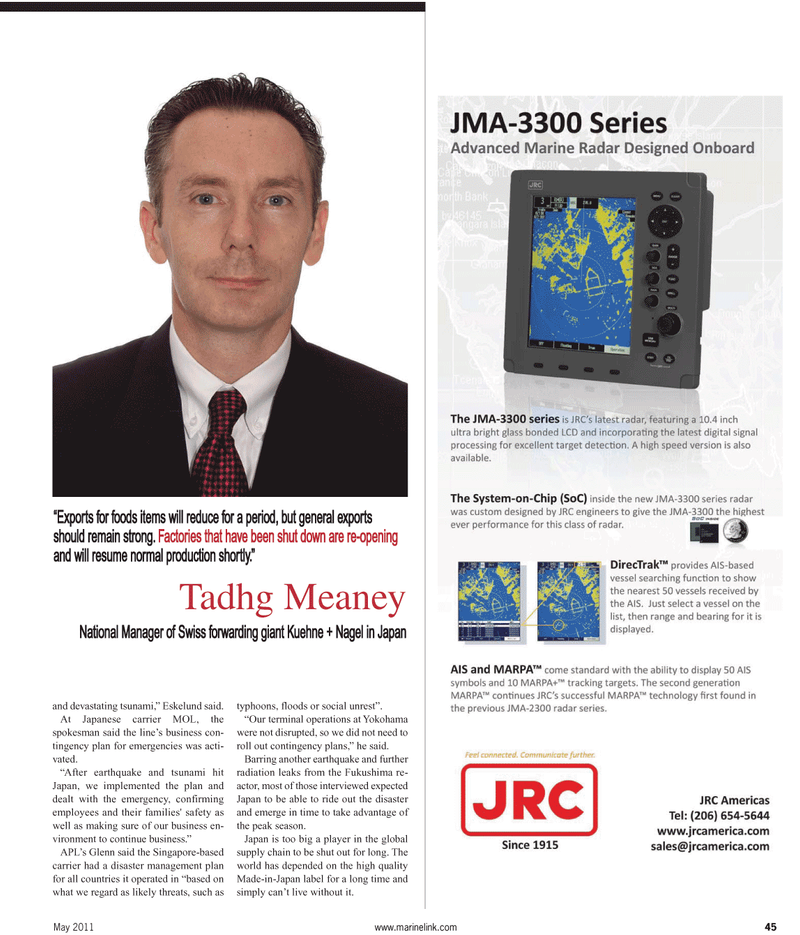
Page 45: of Maritime Reporter Magazine (May 2011)
Training & Education Edition
Read this page in Pdf, Flash or Html5 edition of May 2011 Maritime Reporter Magazine
May 2011 www.marinelink.com 45 and devastating tsunami,” Eskelund said.
At Japanese carrier MOL, the spokesman said the line’s business con- tingency plan for emergencies was acti- vated. “After earthquake and tsunami hit
Japan, we implemented the plan and dealt with the emergency, confirming employees and their families' safety as well as making sure of our business en- vironment to continue business.”
APL’s Glenn said the Singapore-based carrier had a disaster management plan for all countries it operated in “based on what we regard as likely threats, such as typhoons, floods or social unrest”. “Our terminal operations at Yokohama were not disrupted, so we did not need to roll out contingency plans,” he said.
Barring another earthquake and further radiation leaks from the Fukushima re- actor, most of those interviewed expected
Japan to be able to ride out the disaster and emerge in time to take advantage of the peak season.
Japan is too big a player in the global supply chain to be shut out for long. The world has depended on the high quality
Made-in-Japan label for a long time and simply can’t live without it. “Exports for foods items will reduce for a period, but general exports should remain strong. Factories that have been shut down are re-opening and will resume normal production shortly.”
Tadhg Meaney
National Manager of Swiss forwarding giant Kuehne + Nagel in Japan

 44
44

 46
46
